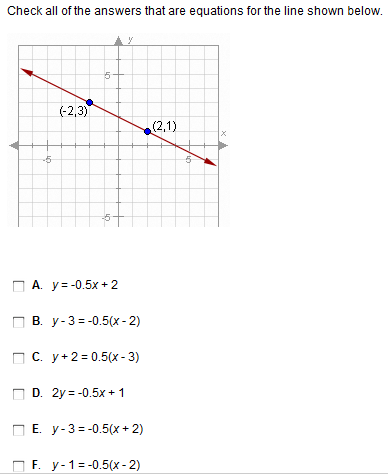Elyssa Xey Hexen
Broken!
- Joined
- Aug 6, 2008
- Messages
- 19,346
Let's assume the block moves in the positive X direction.
Okay, the block accelerates overall with a net acceleration of 6.00m/s^2
The force applied to the block from friction will work against the force pushing the block. So F_push - F_friction = F_net
Since we know the net acceleration and the mass of the block, we get a force net of
4 kg * 6 m/s^2 = 24 N
The force of friction will be modeled by F_friction = nu where u is the coefficent of friction and "n" is the normal force. The F_push is the force applied to the block only along the axis at which the block is moving. We are told the block is pushed against the ceiling at an angle of 55 degrees from horizontal at a magnitude 85N. Splitting this into X and Y components of this force we get
F_x = cos(55) * 85N = 48.75 N
F_y = sin(55) * 85N = 69.63 N
Now, the F_push I mentioned before is this F_x force.
So,
F_push - F_friction = F_net
(48.75 N) - (nu) = 24 N
Now, the normal force is merely the force perpendicular to the direction of motion. This force is made up of the force pushing the block up, and the force pushing the block down. We already calculated one of the forces (F_y), but the force due to gravity will be F_gravity = (9.8 m/s^2) * (4kg) = 39.2 N So the total force pushing the block up is F_y - F_gravity = 30.43 N
Now with the normal force calculated, you can solve for u!
(48.75) - (30.43 * u) = 24
And merely solve for u,
u = (24 - 48.75)/ (-30.43)
u = .8133
Okay, the block accelerates overall with a net acceleration of 6.00m/s^2
The force applied to the block from friction will work against the force pushing the block. So F_push - F_friction = F_net
Since we know the net acceleration and the mass of the block, we get a force net of
4 kg * 6 m/s^2 = 24 N
The force of friction will be modeled by F_friction = nu where u is the coefficent of friction and "n" is the normal force. The F_push is the force applied to the block only along the axis at which the block is moving. We are told the block is pushed against the ceiling at an angle of 55 degrees from horizontal at a magnitude 85N. Splitting this into X and Y components of this force we get
F_x = cos(55) * 85N = 48.75 N
F_y = sin(55) * 85N = 69.63 N
Now, the F_push I mentioned before is this F_x force.
So,
F_push - F_friction = F_net
(48.75 N) - (nu) = 24 N
Now, the normal force is merely the force perpendicular to the direction of motion. This force is made up of the force pushing the block up, and the force pushing the block down. We already calculated one of the forces (F_y), but the force due to gravity will be F_gravity = (9.8 m/s^2) * (4kg) = 39.2 N So the total force pushing the block up is F_y - F_gravity = 30.43 N
Now with the normal force calculated, you can solve for u!
(48.75) - (30.43 * u) = 24
And merely solve for u,
u = (24 - 48.75)/ (-30.43)
u = .8133



